Sleep quality affects everything from muscle growth to daily energy levels. Ipamorelin and CJC-1295 work together to boost growth hormone production naturally. Higher growth hormone levels often lead to deeper sleep cycles and faster recovery times.
This combination has gained attention for its potential sleep and recovery benefits. Direct Peptides supplies these compounds worldwide for those exploring growth hormone optimization. Both peptides are designed for research use only, not human consumption.
Research suggests this stack may enhance sleep patterns and recovery. Understanding this connection requires examining how growth hormone directly influences sleep architecture.
Explore the Ipamorelin and CJC-1295 Stack from Direct Peptides , a powerful GH-releasing combination designed to support deeper sleep cycles, improved recovery, and enhanced protein synthesis.
Growth hormone deficiency creates sleep fragmentation with frequent nighttime awakenings and poor sleep efficiency. Low GH levels reduce time spent in slow-wave sleep, the most restorative phase. Research shows GH-deficient subjects experience shorter total sleep time and longer sleep latency periods.
When growth hormone levels optimize through compounds like Ipamorelin and CJC-1295, sleep architecture improves significantly. Higher GH concentrations enhance REM sleep duration and reduce sleep disturbances.
This creates better sleep quality cycles that support natural recovery processes. The most critical recovery processes occur during slow-wave sleep, where growth hormone reaches its peak levels.
Explore Peptide Supplies at Direct Peptides for all your reconstitution requirements.
Slow-wave sleep triggers intense cellular repair through increased protein synthesis and tissue regeneration processes. Growth hormone floods your system during this stage, promoting muscle fiber repair and bone density improvements.
Your immune system creates adaptive immunity responses while fighting disease-causing pathogens more effectively. The brain’s waste clearance system removes harmful proteins like amyloid-beta that build up during waking hours.
Blood pressure drops significantly, giving your cardiovascular system essential recovery time from daily stress. These recovery processes make slow-wave sleep crucial for physical restoration. Protein synthesis emerges as one of the most important repair mechanisms activated during this recovery phase.
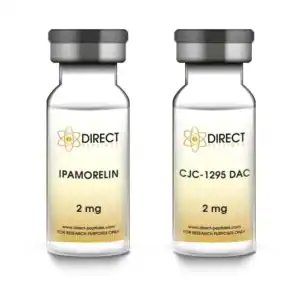 Protein synthesis repairs damaged muscle fibers by incorporating essential amino acids into new muscle proteins. Leucine acts as the primary trigger, signaling muscle cells to start building new tissue structures.
Protein synthesis repairs damaged muscle fibers by incorporating essential amino acids into new muscle proteins. Leucine acts as the primary trigger, signaling muscle cells to start building new tissue structures.
This process peaks 1-3 hours after exercise and continues for up to 48 hours. Muscle protein synthesis replaces broken protein strands with stronger versions, creating muscle hypertrophy over time.
Ipamorelin and CJC-1295 enhance this process by boosting IGF-1 levels, which accelerate amino acid uptake into muscle tissue. The effectiveness of protein synthesis depends heavily on having the right amino acids available.
Leucine is the most important amino acid for muscle recovery. It starts muscle protein synthesis directly. Isoleucine and valine are branched-chain amino acids. They help with muscle metabolism and energy.
Glutamine is important during stress. It prevents muscle breakdown and helps the immune system. Lysine helps repair muscles and improves calcium use for strong bones. These four amino acids support recovery.
Peptides like Ipamorelin and CJC-1295 boost growth hormone to help them. Direct Peptides offers research-grade peptides that support amino acid use in studies. These amino acids work within your body’s complex metabolic processes during recovery periods.
 Your muscles switch from burning carbs to burning fat during recovery. Refilling energy stores becomes the main job after exercise stops. Muscles burn more fat while building up sugar stores for later use.
Your muscles switch from burning carbs to burning fat during recovery. Refilling energy stores becomes the main job after exercise stops. Muscles burn more fat while building up sugar stores for later use.
Energy systems recover in about five minutes through simple processes. This energy switching helps balance your body efficiently. Peptides like Ipamorelin and CJC-1295 help these changes happen faster.
The CJC-1295 + GHRP-6 stack also supports energy recovery well. Researchers find quality peptides at Direct Peptides for their energy studies. These metabolic changes rely on three distinct energy systems that power different aspects of recovery.
Explore the CJC-1295 and GHRP-6 stack from Direct Peptides , a synergistic combo that promotes pulsatile GH release to support recovery, fat metabolism, and cellular repair.
Your body uses three main energy systems to power movement and recovery. The phosphagen system gives instant energy for 0-10 seconds using stored creatine phosphate. The glycolytic system powers activities lasting 10-90 seconds by breaking down stored sugar without oxygen.
The oxidative system supports long activities over 90 seconds by using oxygen to burn fats and carbs. Each system recovers at different speeds after use.
Research shows that compounds supporting these energy pathways help optimize recovery timing for better performance studies. As research advances, new possibilities emerge for optimizing these complex systems through peptide interventions.
Peptide research continues advancing sleep and recovery science rapidly. Growth hormone-releasing compounds like Ipamorelin and CJC-1295 show promise for optimizing sleep cycles and energy system recovery.
The CJC-1295 + GHRP-6 stack offers additional benefits for metabolic recovery processes. As researchers explore these compounds further, new combinations may emerge targeting specific recovery pathways.
Quality research peptides from trusted suppliers support this growing field of study. Future developments will likely focus on personalized peptide protocols for individual energy system needs and sleep optimization patterns.
Shop ALL peptide blends from Direct Peptides online today.
The products mentioned in this post is intended for research and medical purposes only to be used by trained professionals.
[1] Van Hout MC, Hearne E. Netnography of Female Use of the Synthetic Growth Hormone CJC-1295: Pulses and Potions. Subst Use Misuse. 2016 Jan 2;51(1):73-84.
[2] Raun K, Hansen BS, Johansen NL, Thøgersen H, Madsen K, Ankersen M, Andersen PH. Ipamorelin, the first selective growth hormone secretagogue. Eur J Endocrinol. 1998 Nov;139(5):552-61.
[3] Laferrère B, Abraham C, Russell CD, Bowers CY. Growth hormone releasing peptide-2 (GHRP-2), like ghrelin, increases food intake in healthy men. J Clin Endocrinol Metab. 2005 Feb;90(2):611-4.
[4] Moreno-Reyes R, Kerkhofs M, L’Hermite-Balériaux M, Thorner MO, Van Cauter E, Copinschi G. Evidence against a role for the growth hormone-releasing peptide axis in human slow-wave sleep regulation. Am J Physiol. 1998 May;274(5):E779-84.
[5] Teichman SL, Neale A, Lawrence B, Gagnon C, Castaigne JP, Frohman LA. Prolonged stimulation of growth hormone (GH) and insulin-like growth factor I secretion by CJC-1295, a long-acting analog of GH-releasing hormone, in healthy adults. J Clin Endocrinol Metab. 2006 Mar;91(3):799-805.
[6] Alba M, Fintini D, Sagazio A, Lawrence B, Castaigne JP, Frohman LA, Salvatori R. Once-daily administration of CJC-1295, a long-acting growth hormone-releasing hormone (GHRH) analog, normalizes growth in the GHRH knockout mouse. Am J Physiol Endocrinol Metab. 2006 Dec;291(6):E1290-4.
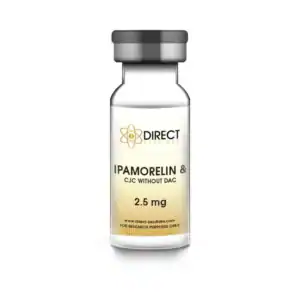
TWIN PACKS
Ipamorelin CJC Without DAC Blend
£24.75 – £44.55Price range: £24.75 through £44.55 Select options This product has multiple variants. The options may be chosen on the product page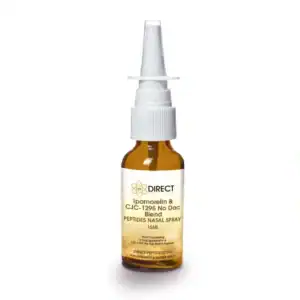
Ipamorelin CJC-1295 No Dac Blend Nasal Spray
£32.75 – £60.50Price range: £32.75 through £60.50 Select options This product has multiple variants. The options may be chosen on the product page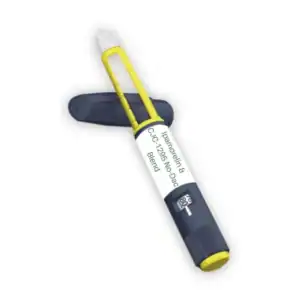
Ipamorelin & CJC-1295 No-Dac Blend 2.5mg Pre Mixed
£27.33 – £73.79Price range: £27.33 through £73.79 Select options This product has multiple variants. The options may be chosen on the product page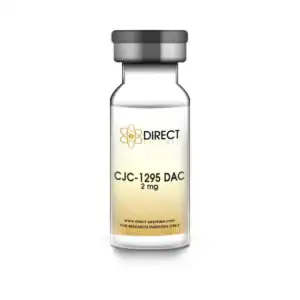
TWIN PACKS
CJC-1295 DAC
£24.20 – £159.26Price range: £24.20 through £159.26 Select options This product has multiple variants. The options may be chosen on the product pageALL CONTENT AND PRODUCT INFORMATION AVAILABLE ON THIS WEBSITE IS FOR EDUCATIONAL PURPOSES ONLY.
DISCLAIMER: These products are intended solely as a research chemical only. This classification allows for their use only for research development and laboratory studies. The information available on our Direct Peptides website: https://m.direct-peptides.com is provided for educational purposes only. These products are not for human or animal use or consumption in any manner. Handling of these products should be limited to suitably qualified professionals. They are not to be classified as a drug, food, cosmetic, or medicinal product and must not be mislabelled or used as such.